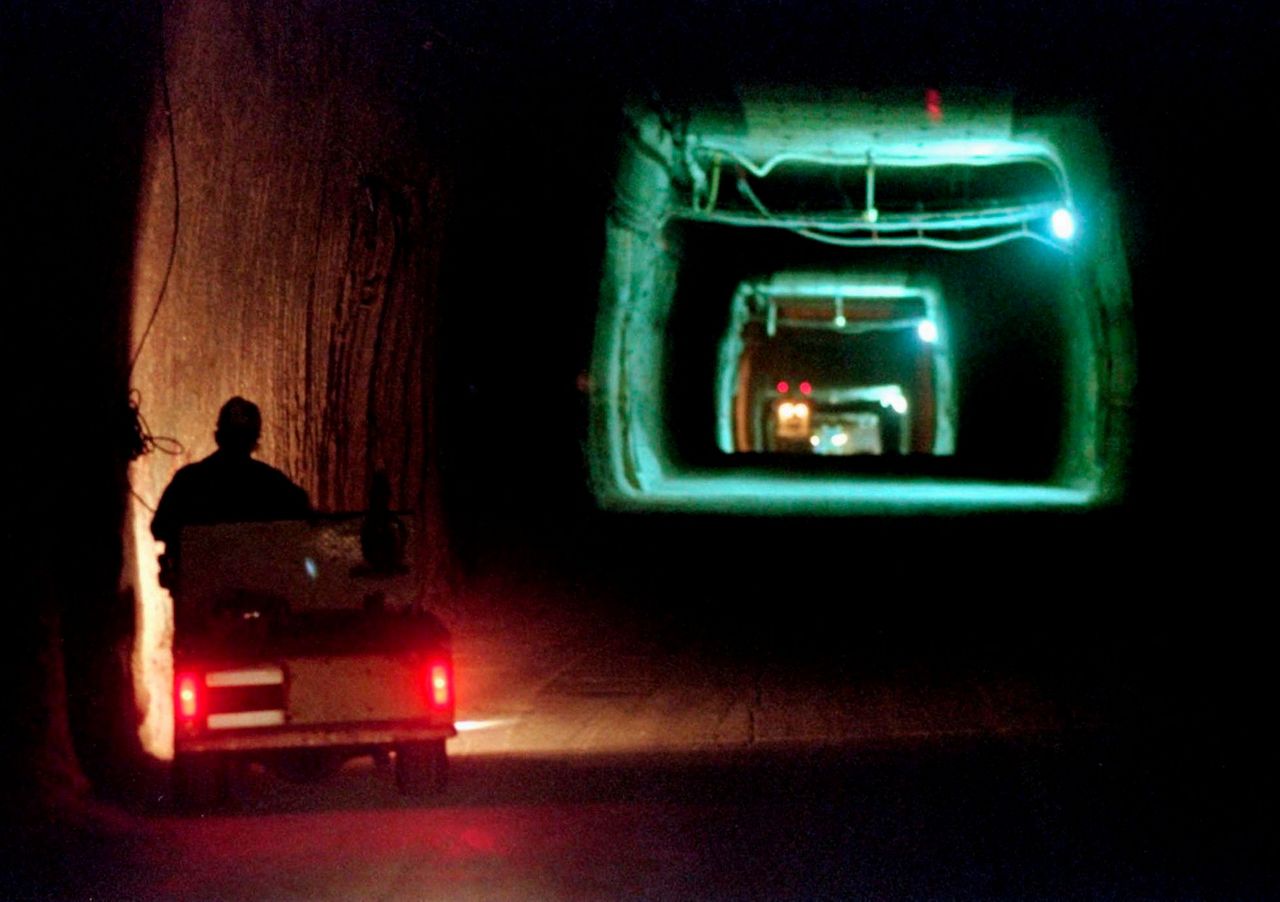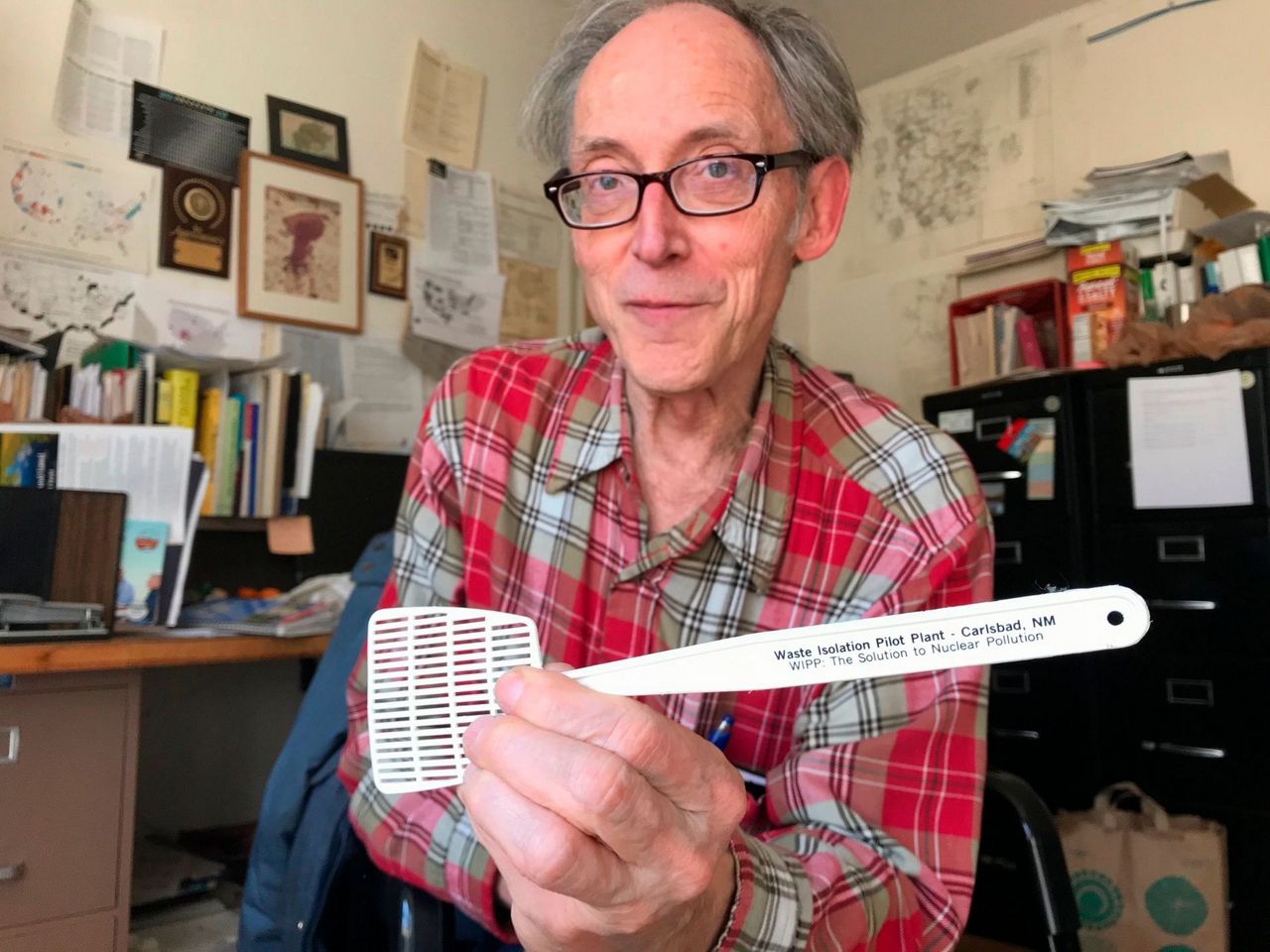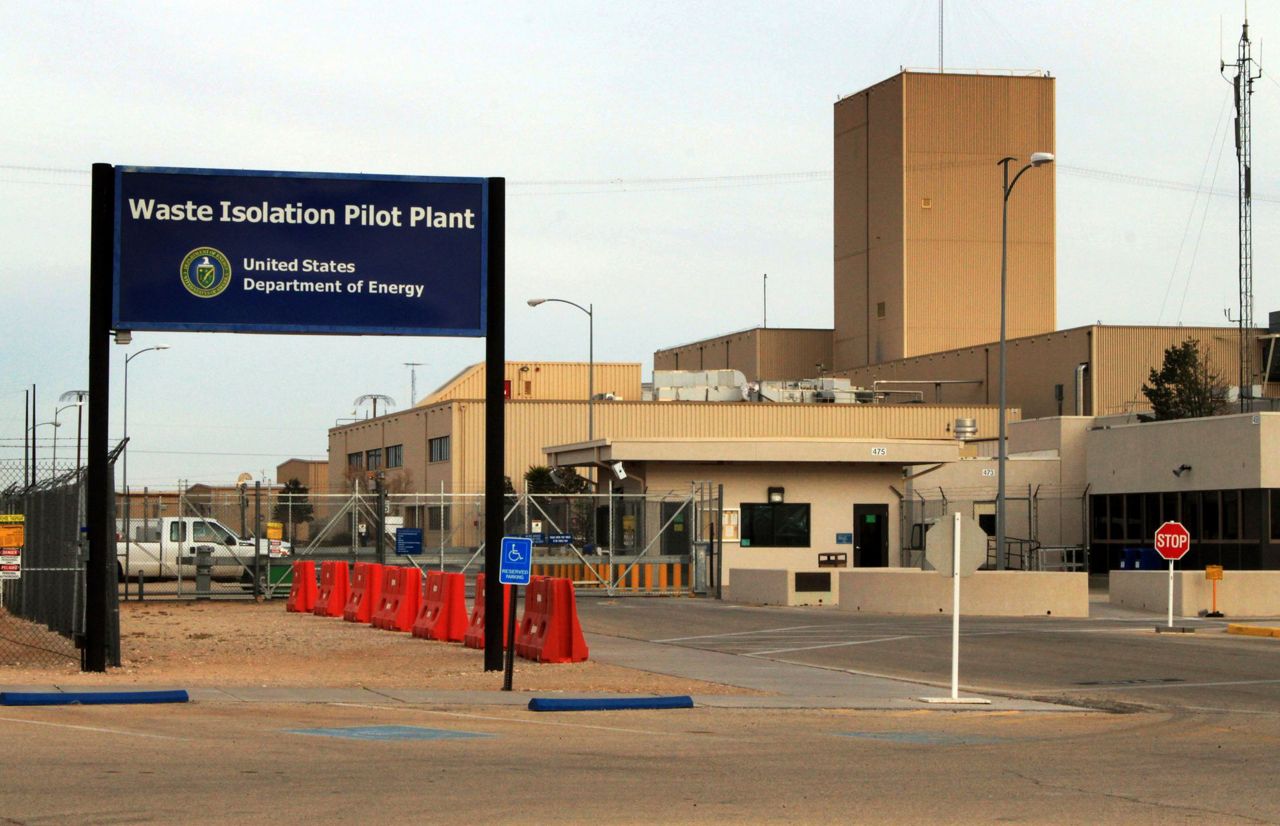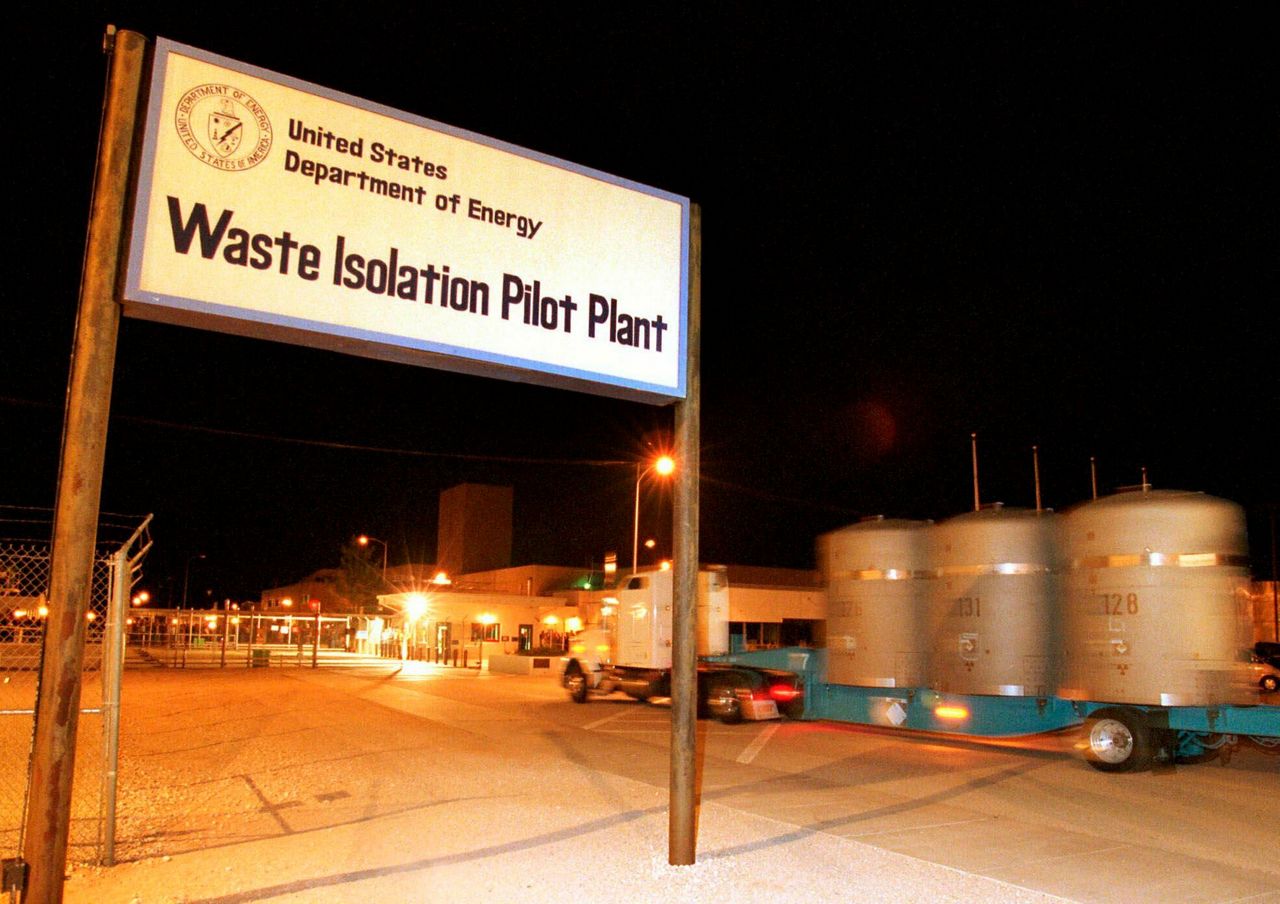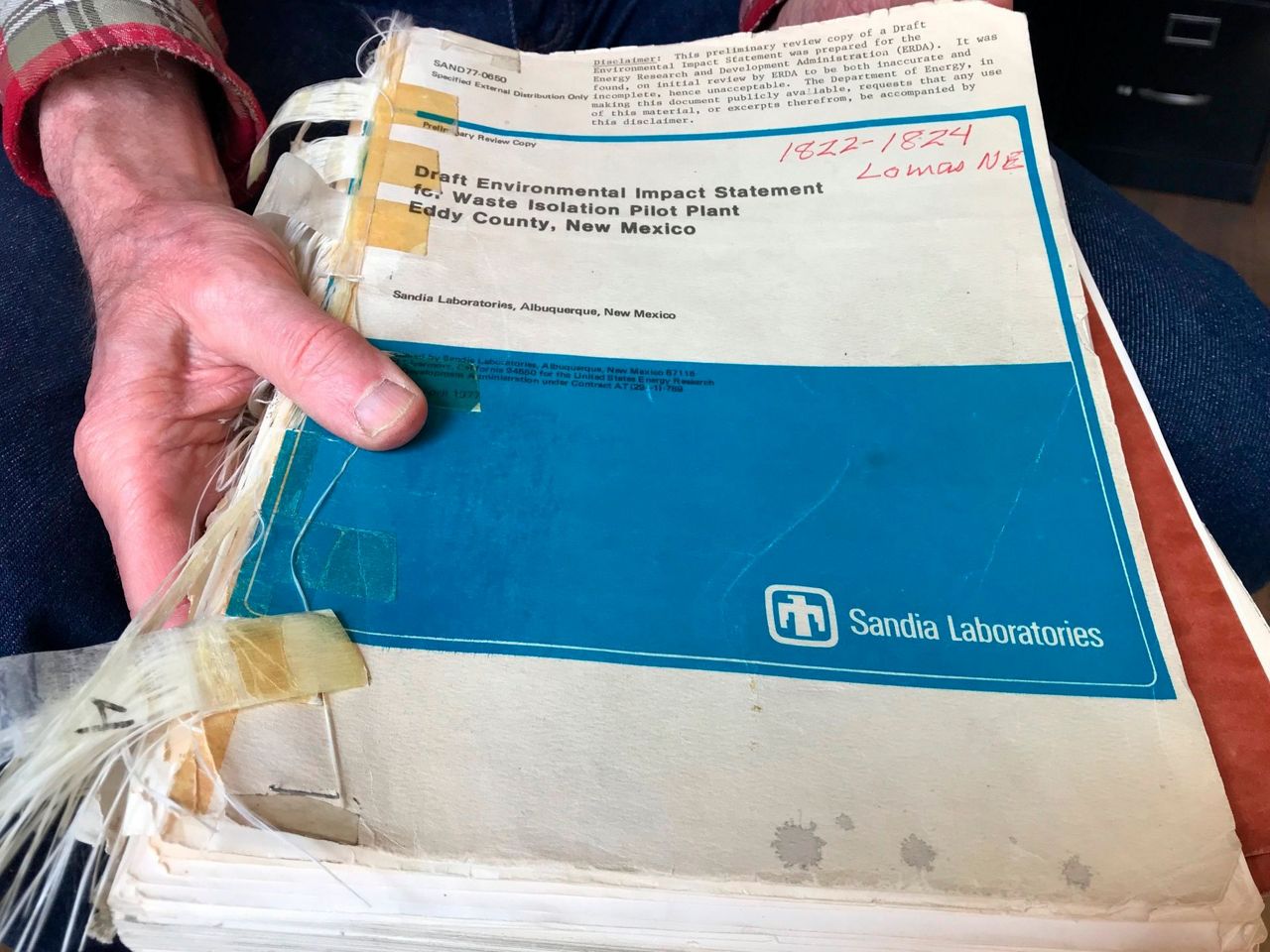ALBUQUERQUE, N.M. (AP) — In a remote stretch of New Mexico desert, the U.S. government put in motion an experiment aimed at proving to the world that radioactive waste could be safely disposed of deep underground, rendering it less of a threat to the environment.
Twenty years and more than 12,380 shipments later, tons of Cold War-era waste from decades of bomb-making and nuclear research across the U.S. have been stashed in the salt caverns that make up the underground facility . Each week, several shipments of special boxes and barrels packed with lab coats, rubber gloves, tools and debris contaminated with plutonium and other radioactive elements are trucked to the site.
But the Waste Isolation Pilot Plant has not been without issues.
A 2014 radiation leak forced an expensive, nearly three-year closure, delayed the federal government's cleanup program and prompted policy changes at national laboratories and defense-related sites across the U.S. More recently, the U.S. Department of Energy said it would investigate reports that workers may have been exposed last year to hazardous chemicals.
Still, supporters consider the repository a success, saying it provides a viable option for dealing with a multibillion-dollar mess that stretches from a decommissioned nuclear weapons production site in Washington state to one of the nation's top nuclear research labs, in Idaho, and locations as far east as South Carolina.
If it weren't for the Waste Isolation Pilot Plant, many containers of plutonium-contaminated waste would be outside, exposed to the weather and susceptible to natural disasters, said J.R. Stroble, head of business operations at the Department of Energy's Carlsbad Field Office, which oversees the contractor that operates the repository.
"The whole purpose of WIPP is to isolate this long-lived radioactive, hazardous waste from the accessible environment, from people and the things people need in order to live life on Earth," he told The Associated Press.
Stroble and others in the communities surrounding the repository are steadfast in their conviction that the facility is a success. They point to 22 sites around the nation that have been cleaned up as a result of having somewhere to put the waste — including Rocky Flats, a former nuclear weapons plant outside Denver that had a history of leaks, spills and other violations.
For critics, that success is checkered at best since the repository is far from fulfilling its mission.
"It's 80 percent through its lifetime, and it has disposed of less than 40 percent of the waste and has cost more than twice as much as it was supposed to," said Don Hancock with the watchdog group Southwest Research and Information Center. "How great of a success is that?"
Officials initially thought the facility would operate for about 25 years. Rather than wrapping up in the next few years, managers have bumped the timeline to 2050.
The repository was carved out of an ancient salt formation about a half-mile (0.8 kilometer) below the surface, with the idea that the shifting salt would eventually entomb the radioactive waste.
It was the National Academy of Sciences in the 1950s that first recommended disposing of atomic waste in deep geologic formations. Scientists began taking a hard look at the New Mexico site about two decades later.
The scientists had to convince themselves and then federal regulators that it was safe. One of their tasks was determining that the ancient seawater trapped between the salt crystals and bound up in thin bands of clay within the salt deposit would pose no problems thousands of years later.
"It was exciting to be working on what was then going to be the world's first deep-geologic repository for that class of waste," said Peter Swift, a senior scientist at Sandia National Laboratories. "Nothing that radioactive had been put that deep underground before. And that's still true 20 years later."
While the real test will be what happens generations from now, Swift is confident in the science behind the project.
But the wild card in whether the repository is ultimately deemed a success will be the human factor. After all, missteps by management were blamed for the 2014 radiation release.
With some areas permanently sealed off due to contamination, more mining will have to be done to expand capacity. The federal government also is spending more than a half-billion dollars to install a new ventilation system, sink more shafts and make other upgrades aimed at returning to "normal business."
Hancock and some former elected leaders involved in early discussions about the facility worry about the subterranean landfill becoming a dumping ground for high-level waste or commercial nuclear waste.
But it would take an act of Congress to expand the repository's mission, and getting consent from New Mexico's delegates would be a tall order since the federal government still has no long-term plan for dealing with such waste. Nevada's proposed Yucca Mountain project is mothballed, and no other permanent disposal proposals are on the table.
Toney Anaya, who served as New Mexico governor in the 1980s, remembers the heated debates about bringing more radioactive waste to the state. He said there were concerns about safety, but the promise of jobs was attractive. Some also argued New Mexico had a moral obligation given its legacy of uranium mining and its role in the development of the atomic bomb.
Another former governor, Bill Richardson, was on both sides of the tug of war — first as a young Democratic congressman who wanted to impose environmental standards and keep 18-wheelers loaded with waste from passing through the heart of Santa Fe. Then, he became U.S. energy secretary during the Clinton administration and pressured the state to clear the way for the repository to open.
"For New Mexico, we've done our share of storing waste, and we've done it safely and effectively," Richardson said. "It's provided jobs, but I just think the future of the state is not nuclear."
Southeastern New Mexico's ties to nuclear run deep and will continue for at least the next 30 years under the plans being charted now.
Robust state regulation will be key in ensuring responsible management going forward, said Hancock, with the watchdog group. The problem, he said, is that besides the Cold War-era waste that has yet to be dealt with, the federal government and nuclear power plants keep generating more.
"We need to decide what our capacities are actually going to be — how much nuclear power waste are we going to create, how much nuclear weapons waste are we going to create — so that we can then put our arms around the problem," Hancock said.
Copyright 2019 The Associated Press. All rights reserved. This material may not be published, broadcast, rewritten or redistributed.



